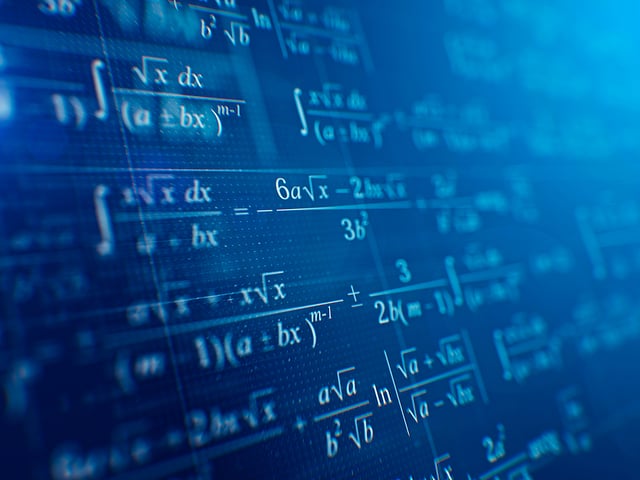
Formulas for Math on the CSET®: Number Sense, Algebra, and Statistics
The time has come. You have to take the CSET® Test, but you don’t remember a lot of math, or maybe you want to have a sense of what lies ahead. There are certain areas we sometimes overlook or forget about from past education. For the CSET® Test, it’s very important to have a broad and complete understanding of the different concepts in math. That’s why we’ve prepared the following chart with the essential formulas for Math on the CSET®. Stop wondering if you remember every concept, instead, print this chart and start solving the problems we have for you at Union Test Prep:
Free Math Practice for the CSET® Multiple Subjects Test
You’ll also want access to our other formula chart for the CSET® Multiple Subjects Test math section:
Formula Chart for Geometry and Measurement Problems
Formulas for Number Sense, Algebra, and Statistics
| Category | Formula | Symbols | Comment |
|---|---|---|---|
| Number Sense |
\(a+b=b+a\) \(a \cdot b = b \cdot a\) |
a, b = any constant or variable | Commutative Property |
| Number Sense |
\(a+(b+c)=(a+b)+c\) \(a \cdot (b \cdot c)=(a \cdot b) \cdot c\) |
a, b, c = any constant or variable | Associative Property |
| Number Sense |
\(a \cdot (b+c)=a \cdot b + a \cdot c\) | a, b, c = any constant or variable | Distributive Property |
| Number Sense |
\(a+0=a\) | a = any constant or variable | Identity Property of Addition |
| Number Sense |
\(a \cdot 1 = a\) | a = any constant or variable | Identity Property of Multiplication |
| Number Sense |
\(\dfrac{a}{b} + \dfrac{c}{d} = \dfrac{(a \cdot d)+(c \cdot b)}{(b \cdot d)}\) | a, b, c, d = any real number | Remember to simplify the fraction if possible. |
| Number Sense |
\(\dfrac{a}{b} \cdot \dfrac{c}{d}=\dfrac{(a \cdot c)}{(b \cdot d)}\) | a, b, c, d = any real number | Remember to simplify the fraction if possible. |
| Number Sense |
\(\dfrac{a}{b} \div \dfrac{c}{d}=\dfrac{(a \cdot d)}{(b \cdot c)}\) | a, b, c, d = any real number | Remember to simplify the fraction if possible. |
| Number Sense |
\(a\dfrac{b}{c}=\dfrac{(a \cdot c)+b}{c}\) | a, b, c = any real number | Remember to simplify the fraction if possible. |
| Algebra | \(x+a=b \Rightarrow x=b-a\) \(x-a=b \Rightarrow x=b+a\) \(x \cdot a=b \Rightarrow x=b \div a\) \(x \div a=b \Rightarrow x=b \cdot a\) \(x^a=b \Rightarrow x = \sqrt[a]{b}\) \(\sqrt[a]{x}= b \Rightarrow x= b^a\) \(a^x=b \Rightarrow x=\frac{log\ b}{log\ a}\) |
a, b = constants x = variable |
|
| Algebra | \(x^a \cdot x^b=x^{a+b}\) | a, b, x = any real number |
|
| Algebra | \(\dfrac{x^a}{x^b}=x^{a-b}\) | a, b, x = any real number | |
| Algebra | \((x^a)^b = x^{a \cdot b}\) | a, b, x = any real number | |
| Algebra | \((x \cdot y)^a = x^a \cdot y^a\) | a, x, y = any real number | |
| Algebra | \(x^1=x\) | x = any real number | |
| Algebra | \(x^0=1\) | x = any real number | |
| Algebra | \(x^{-a}= \dfrac{1}{x^a}\) | a, x = any real number | |
| Algebra | \(x^{\frac {a}{b}} = \sqrt[b]{x^a} = (\sqrt[b]{x})^a\) | a, b, x = any real number | |
| Algebra | \(\dfrac{x}{\sqrt{y}} \cdot \dfrac {\sqrt{y}}{\sqrt{y}} = \dfrac{x \sqrt{y}}{y}\) | x, y = any real number | |
| Algebra | \(y=m \cdot x + b\) | y = dependent variable m = slope x = independent variable b = y axis intercept |
Slope-Intercept Form. Try to convert any given linear equation to this form. |
| Quadratic Equations |
\(x= \dfrac{-b \pm \sqrt{b^2-4 \cdot a \cdot c}}{2 \cdot a}\) | a, b, c = constants c = y axis intercept x = variable |
Quadratic Formula for equation in form \(ax^2 + bx + c = 0\) |
| Statistics | \(Du=Su \cdot \dfrac{Du}{Su}=Su \cdot CF\) | Du = Desired Unit Su = Starting Unit CF = Conversion Factor |
Multiple steps may be needed. |
| Statistics | \(a \cdot b\% =a \cdot \dfrac{b}{100}\) | a = any real number b% = any percent |
Remember to simplify if possible |
| Statistics | \(\% = \dfrac{\vert b-a \vert }{b} \cdot 100= \dfrac{c}{b} \cdot 100\) | % = % increase or decrease a = new value b = original value c = amount of change |
|
| Statistics | \(\overline{x}= \dfrac{\Sigma x_i}{n}\) | \(\overline{x}\) = mean \(x_i\) = value of each measurement n = number of measurements |
|
| Statistics | \(Md=(\dfrac{n+1}{2})^{th} term\) | Md = median n = number of measurements (odd) |
|
| Statistics | \(Md=\dfrac{(\frac{n}{2})^{th} term + (\frac{n+1}{2})^{th} term }{2}\) | Md = median n = number of measurements (even) |
|
| Statistics | \(s=\sqrt{\Sigma(x_i-\overline{x})^2/(n-1)}\) | s = standard deviation \(\overline{x}\) = mean \(x_i\) = value of each measurement n = number of measurements |
|
| Statistics | \(V = s^2\) | v = Variance s = standard deviation |
|
| Statistics | \(CV=RSD=100 \cdot \dfrac{s}{\overline{x}}\) | CV = Coefficient of variation RSD = Relative standard deviation s = standard deviation |
|
| Statistics | \(p= \dfrac{d}{t}\) | p = probability of an event d = number of ways the desired event can occur t = total number of events |
Keep Reading

CSET Multiple Subjects Test Blog
Formulas for Science on the CSET® Multiple Subjects Test
One thing you have to keep in mind when preparing for Science on this t…

CSET Multiple Subjects Test Blog
Formulas for Math on the CSET®: Geometry and Measurement
Geometry and measurement are areas of math in which you’re urged to not…

CSET Multiple Subjects Test Blog
Welcome to the CSET™ Multiple Subjects Test
This is one of the tests you may be required to pass before being crede…